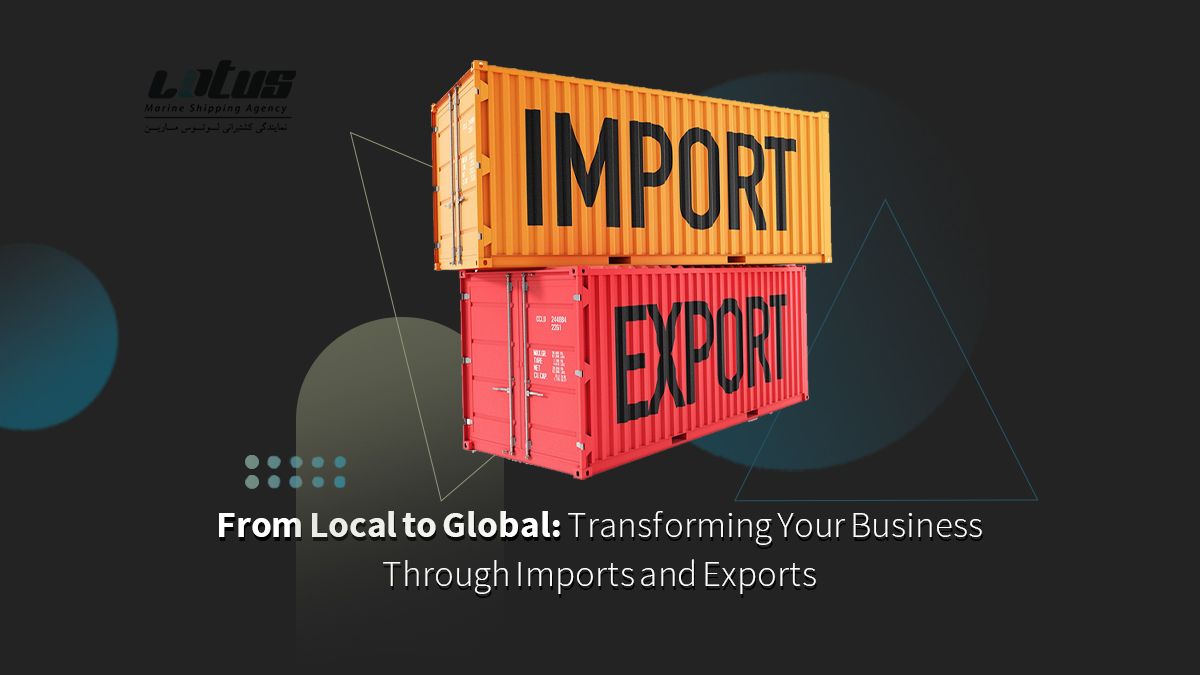Introduction
In today’s rapidly globalizing world, transforming your local business into a global powerhouse through imports and exports is not just an ambition but a necessary stride for growth and sustainability. This article delves into the essential steps, challenges, and strategies for expanding your business beyond borders, ensuring a smooth transition from local to global.
Understanding the Basics
What are Imports and Exports?
Imports and exports are the lifeblood of international trade, involving the buying and selling of goods and services across international borders. Understanding this dynamic is the first step towards global business expansion.
Benefits of Going Global
Expanding your business globally can lead to increased revenue, diversification of products and services, and access to new markets. It also enhances your brand’s visibility and competitiveness on a global scale.
Getting Started with Imports
Identifying What to Import
Researching and identifying products or services that are in demand in your local market but are not readily available is crucial. This requires thorough market analysis and understanding consumer needs.
Navigating Legal and Regulatory Requirements
Understanding and adhering to the legal and regulatory requirements of importing goods into your country are vital. This includes customs regulations, import duties, and taxes.
Expanding through Exports
Finding Your Market Abroad
Selecting the right market for your products involves analyzing market trends, consumer behavior, and the competitive landscape in potential export destinations.
Overcoming Export Challenges
Exporting presents its own set of challenges, including logistics, payment methods, and ensuring product compliance with foreign regulations.
Leveraging Technology
E-commerce and Digital Marketing
Utilizing e-commerce platforms and digital marketing strategies can significantly enhance your global reach and customer engagement.
Logistics and Supply Chain Solutions
Investing in efficient logistics and supply chain solutions is crucial for managing the movement of goods across borders effectively.
Cultural Considerations
Understanding Cultural Differences
Being aware of and respecting cultural differences is essential for successful market entry and customer engagement in new countries.
Adapting Your Product for New Markets
Modifying your product or service to meet the tastes and preferences of a new market can be key to global success.
Financial Aspects
Funding Your Expansion
Exploring funding options, including loans, grants, and venture capital, is necessary for supporting your global expansion efforts.
Managing Currency Risk
Implementing strategies to manage currency risk is important in ensuring financial stability in international trade.
Case Studies of Successful Global Businesses
Small Business Success Stories
Examining the success stories of small businesses that have successfully gone global can provide valuable insights and inspiration.
Lessons Learned
Learning from the challenges and strategies of other businesses can help in navigating your own path to global expansion.
Challenges and Solutions
Navigating Political Changes and Economic Uncertainty
Being adaptable to political changes and economic uncertainty in international markets is crucial for sustaining global operations.
Dealing with Trade Barriers and Tariffs
Developing strategies to overcome trade barriers and tariffs will enhance your competitiveness in global markets.
Conclusion
Transforming your business from local to global through imports and exports requires strategic planning, adaptability, and a deep understanding of international trade dynamics. By embracing the challenges and leveraging the opportunities presented by global markets, your business can achieve remarkable growth and success on the world stage.
FAQs
- What are the first steps in starting an import/export business?
- How can I identify the best markets for my products?
- What are the most common challenges faced in international trade?
- How can technology aid in expanding my business globally?
- What are some strategies for managing currency risk in international trade?

